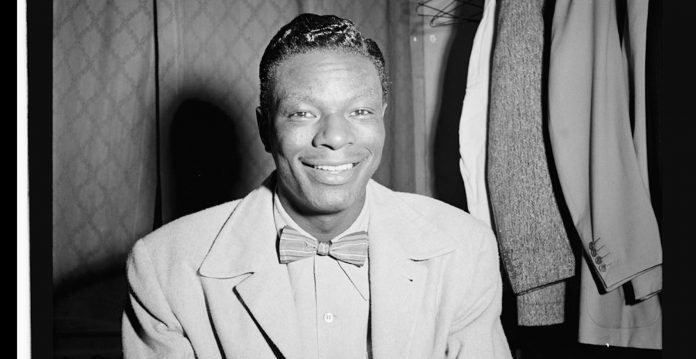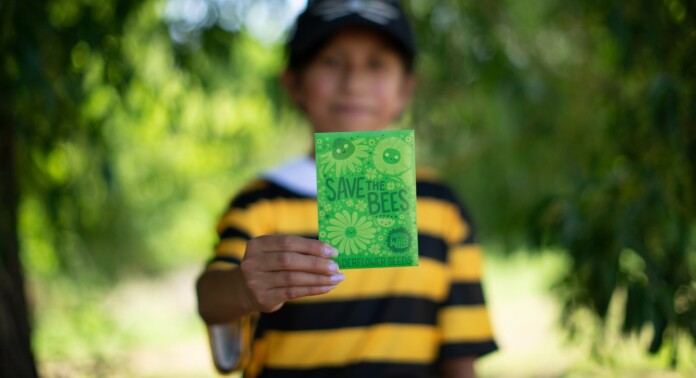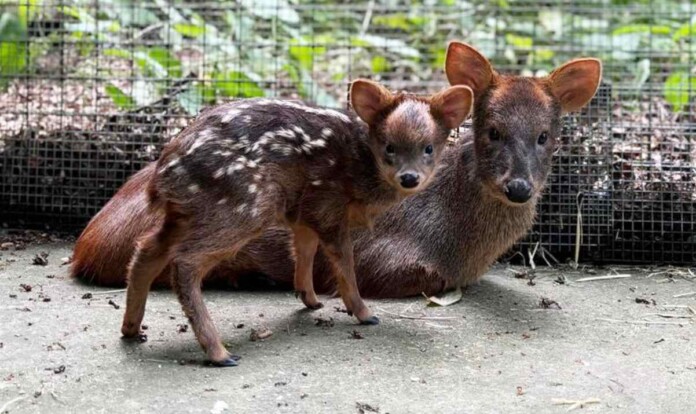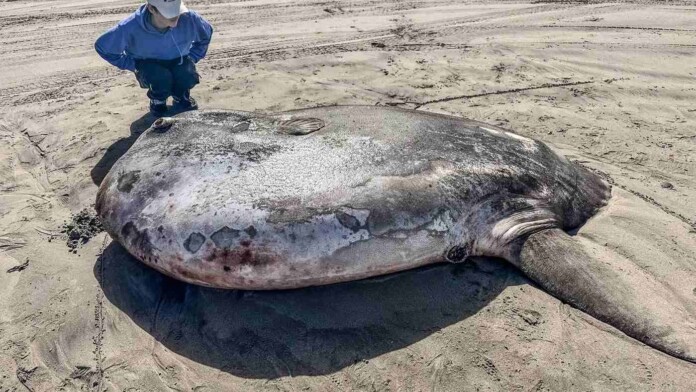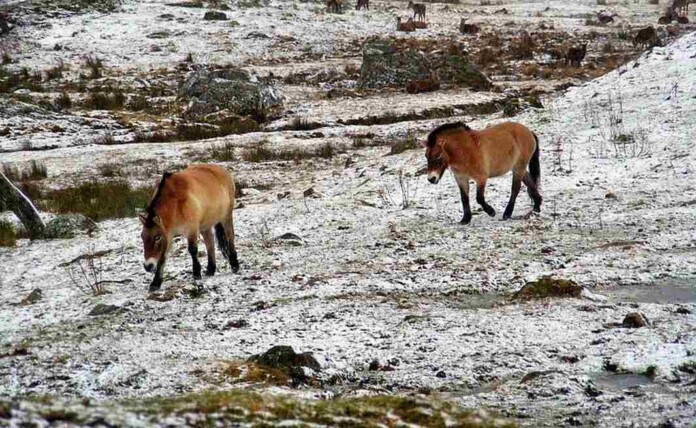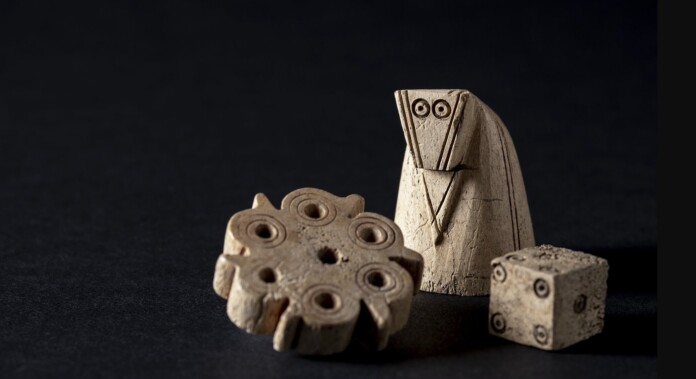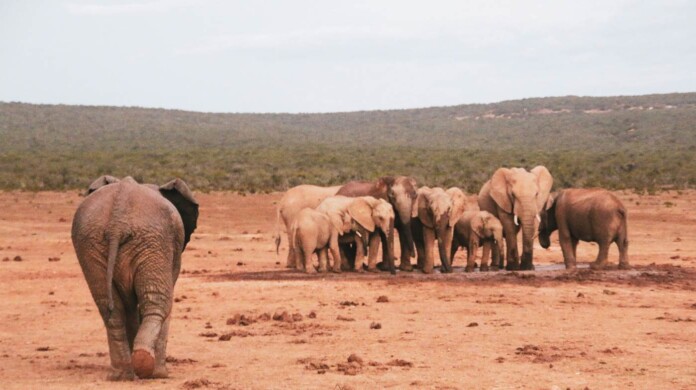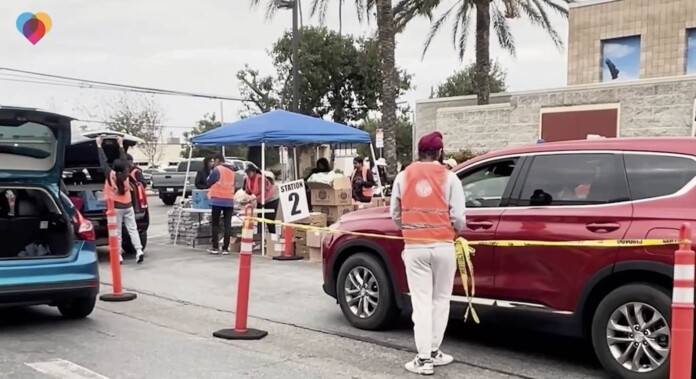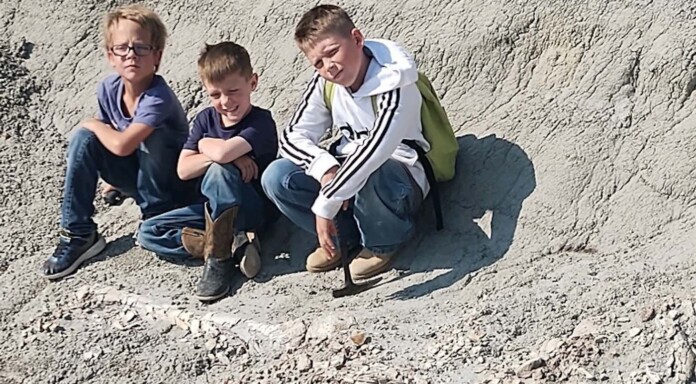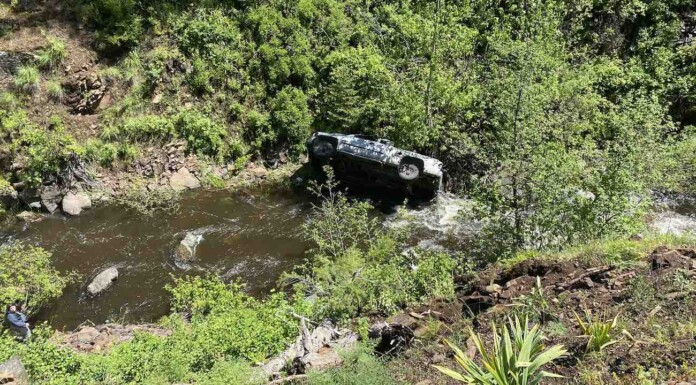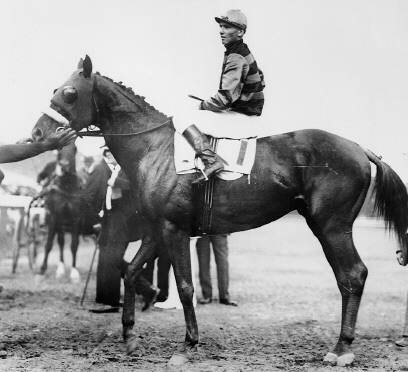98 years ago today, sumptuous singer Nat King Cole recorded The Christmas Song, written by Mel Tormé and Bob Wells, for the first time. It is still today, lo-fi be darned, one of the most preferred versions of this icon of iconic yuletide tunes. While it’s a little early in the year for Christmas songs, YouTube has the man singing the song on his short-lived variety show, The Nat King Cole Show. READ more and watch the video… (1946)
Group Wants Colorado Kids to Save the Bees This Summer–Giving Out 100,000 Free Packets of Wildflower Seeds
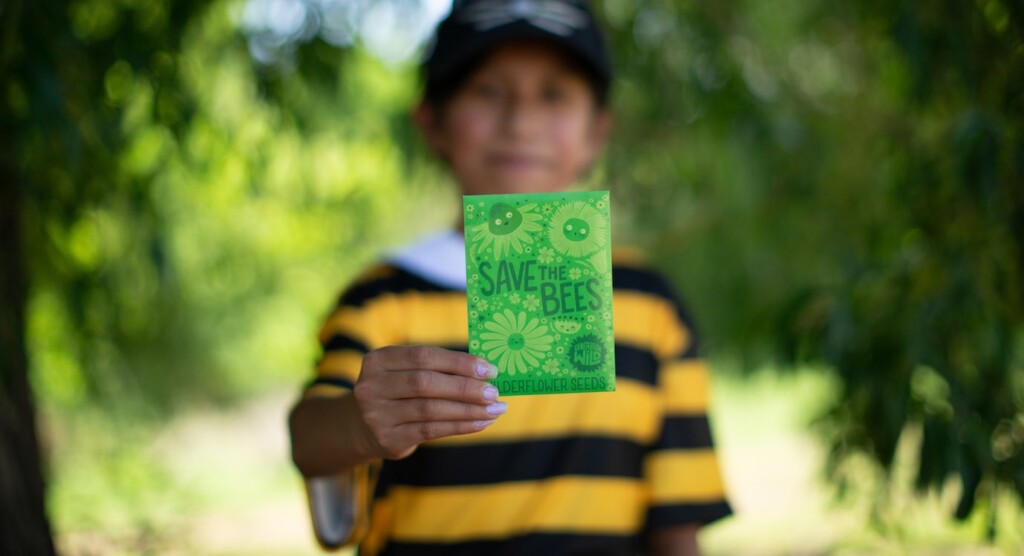
Next Monday is the start of National Pollinator Awareness Week, and one Colorado advocacy group is hosting a flower planting drive to rewild Colorado’s meadows, gardens, and just maybe, its children too.
Created by constitutional amendment in 1992, Great Outdoors Colorado (GOCO) is a state-funded independent board that invests a portion of Colorado Lottery proceeds to help preserve and enhance the state’s parks, trails, wildlife, rivers, and open spaces.
This year, GOCO’s offshoot Generation Wild is distributing over 100,000 free packets of wildflower seeds to collection points at museums, Denver Parks and Rec. offices, and libraries all over the state to encourage kids and families to plant the seeds in their backyards.
The Save the Bees! initiative aims to make the state more beautiful, more ecologically diverse, and more friendly to pollinators.
According to a new report from the Colorado Department of Natural Resources, 20% of Colorado’s bumblebees are now at risk of extinction. Even in a small area like a backyard, planting wildflowers can make a positive impact on the local ecosystem and provide native bees with a healthy place to live.
“The Western Bumblebee population has declined in Colorado by 72%, and we’re calling on kids across Colorado to ‘bee’ the change,” said GOCO Executive Director Jackie Miller.
“Through this effort, kids will be empowered to improve the environment and learn firsthand what helps our local ecosystems thrive. Most importantly, they’ll be outside engaging with nature in a fun and personal way,” she added in a statement.

Named after Generation Wild’s official mascot “Wilder,” the Wilderflower Seed Mix was developed in partnership with Applewood Seed Co. and packets are now available for pickup at designated partner sites including more than 80 Little Free Library boxes.
OTHER FUN ACTIVITIES: Never-Ending Literary Treasure Hunt Has Kids Finding Hidden Books, Reading, Then Re-Hiding Them for Others
By distributing 100,000 Wilderflower packets, Generation Wild is providing more than 56 million seeds for planting in every nook and cranny of the state. All seeds are regionally-native to Colorado, which is important for sustaining the living landscape of bees, birds, and other animals.
Additionally, by using flower species adapted to the Mile High climate, landscapers and gardeners need to use less water than if they were tending non-native plants.
MORE POLLINATOR STORIES: Good News for California Bees: Governor Signs Law to Help Protect Pollinators From Toxic Pesticides
“Applewood Seed Co. was excited to jump in and help Generation Wild identify a seed mix that is native to the Colorado region and the American West, containing a diversity of flower species to attract and support Colorado’s pollinator populations,” stated Norm Poppe, CEO of Applewood Seed Co. “We hope efforts like this continue to educate the public on pollinator conservation and the need to protect our native bees and butterflies.”
Concluding her statement Miller firmly stated that children grow up better outside, and if you or a parent you know agree with her, all the information on how to participate in Save the Bees! can be found here on their website, including a map showing all the local pickup points for the Wilderflower Seed Packets.
SHARE This Delightful Summer Planting Drive With Your Friends From CO…
Edinburgh Zoo Welcomes Adorable South American Deer Fawn the Size of a Bread Loaf–(LOOK)
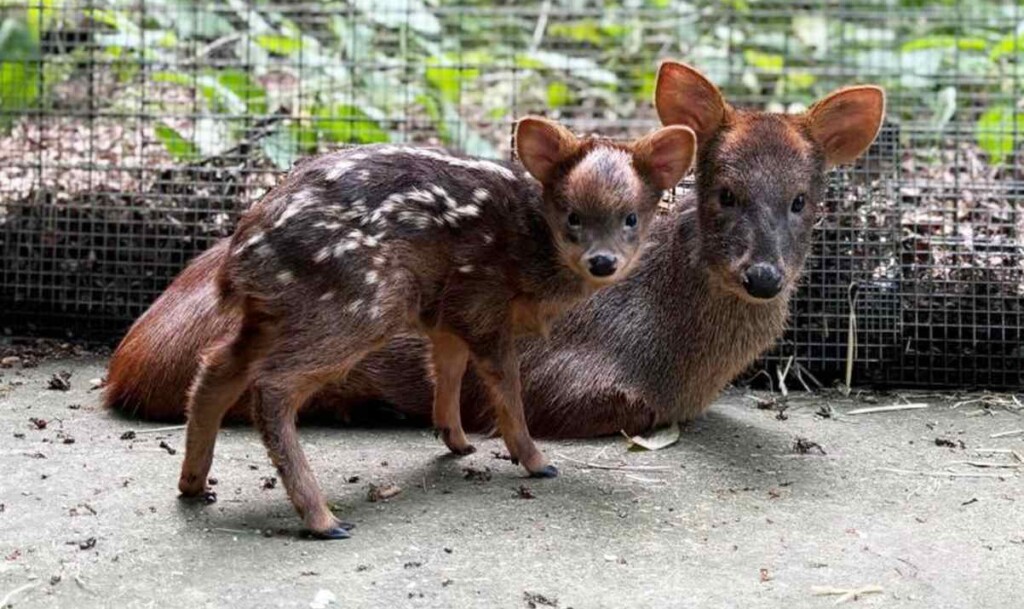
The Edinburgh Zoo has shared the first images of an adorable two-week-old Southern pudu fawn, the second smallest deer in the world.
It was born to first-time parents Violetta and Evan. The tiny female youngster is doing well and has been named Gia by keepers at the zoo, managed by the Royal Zoological Society of Scotland.
Native to the forests of Chile and Argentina, pudu are the smallest members of the deer family, with the larger of the two—the southern pudu—standing at just 17.7 inches (55cm) tall when fully grown.
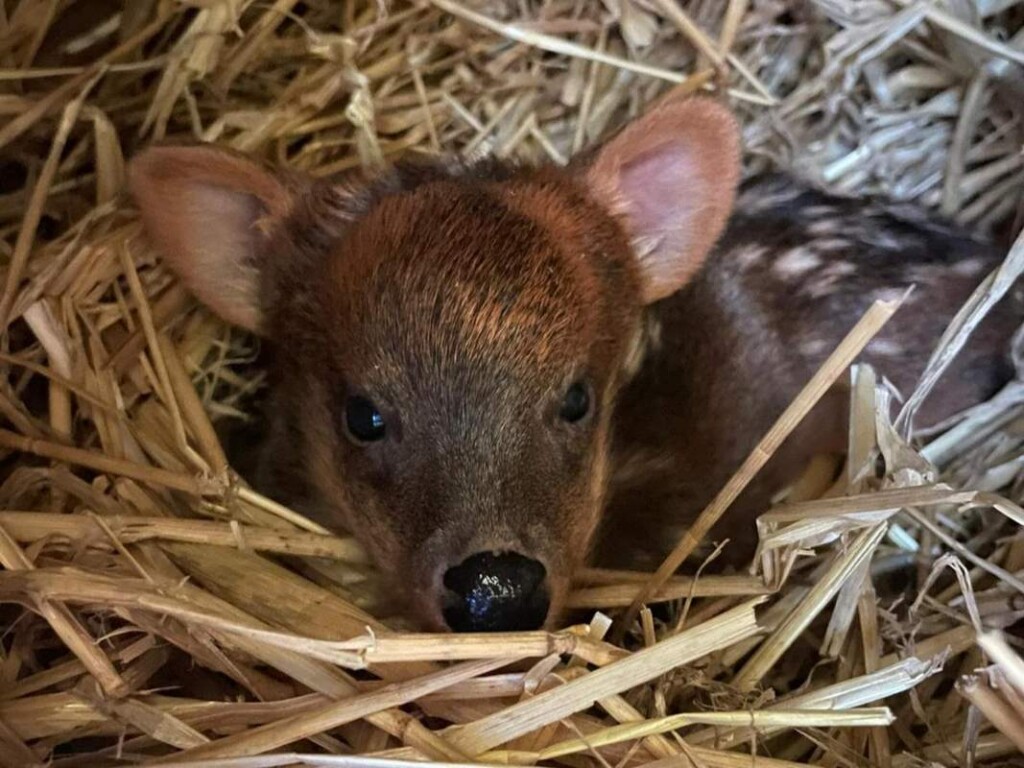
Appearing somewhat like a hybrid, an adult southern pudu has a stocky build with antlers that grow up and curve back, giving it the appearance of a goat in some respects.
ANOTHER ANIMAL TO FAWN OVER: In This Family, The Dogs Take the Horse for a Walk – WATCH
Edinburgh Zoo’s tiny new arrival weighed around 1.2 pounds, or 630g, at birth—less than a loaf of bread.
MORE MINIATURE ANIMALS: Tiny Pygmy Possums Discovered on Kangaroo Island After Fears Bushfires Had Wiped Them Out
She won’t be able to be viewed by the public for the first few weeks of her life, but probably starting July visitors can expect to see her under the watchful guidance of Violetta.
GIVE Your Friends On Social Media A Change To Fawn Over This Cuty…
Three Valencia Cemeteries to Play Host to Largest Urban Solar Farm in Spain

Another European city has taken up the idea of utilizing the space over its cemeteries for generating solar power, a project it calls Requiem in Power, or RIP.
At the heart of Valencia, three cemeteries at Grau, Campanar, and Benimàmet will be outfitted with 7,000 panels to create the largest urban solar farm in Spain.
GNN reported in March that a town on the River Loire in France had initiated a community-led project to raise solar panel canopies to stop excess rainwater from flooding the sea-level town cemetery.
The town, Saint-Joachim, had to raise the money for the project through voluntary taxation as well as seek permission from residents, which wasn’t a problem for former Valencia city climate councilor Alejandro Ramon who explained that the city owns the cemetery land and can do as they like.
But just to make sure they weren’t walking over anyone’s graves, they sought permission from the Catholic Diocese, who supported the idea.
“We suffer droughts and extreme heat. It’s necessary to speed up the transition, but sometimes in cities it’s difficult to find large free spaces to install renewable energy,” Ramon told Adele Peters at Fast Company. “After consulting with technicians they told me that the roofs of the niches were perfectly suitable for installing solar panels.”
MORE UNORTHODOX SOLAR PLACEMENT: Switzerland Set to Roll Out Solar Panels Between Railway Tracks–A World First
The niches that Ramon refers to are those above the mausoleums.
In an effort to speed up the transition, as Ramon said, Europeans are coming up with more and more inventive ways to install solar panels, including inside the terracotta roof tiles typical of a historic Italian or Greek roof, or on over 100,000 balconies and terraces in Germany.
SPANISH SOLAR MILESTONES: Spain Generates 50% of its Power From Renewables in 2023, With Portugal Set to Hit 100%
One benefit of a solar farm right in the heart of the city, as those above the cemeteries will provide, is that wattage isn’t lost through the transfer of power from the countryside into the city on long power lines.
Far less additional transfer infrastructure needs to be built, and residents can be inspired knowing that their ancestors are still pulling their weight years after their deaths.
SHARE This Creative Use Of Land In A Spanish Metropolis With Your Friends…
Giant 7-foot Sunfish Found on Oregon Beach Turns Out to Be Rarest Member of the Species
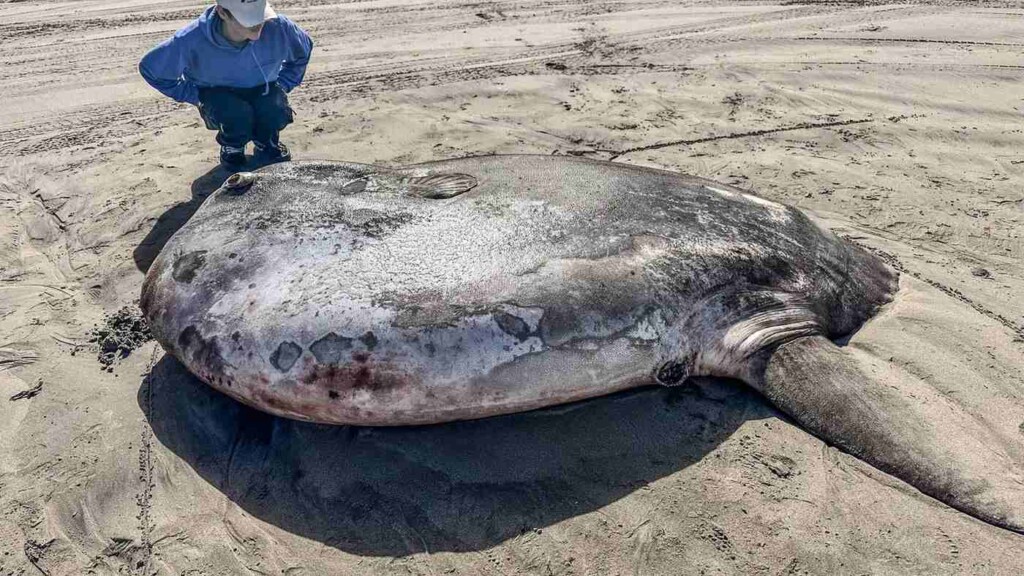
When a giant ocean oddity washed up on a beach in northern Oregon, residents were flocking to get a closer look at a rarely-seen fish.
Believing it to be the charismatic Mola mola, or ocean sunfish, pictures eventually made their way across the Pacific to the desk of marine biologist Marianne Nyegaard, who recognized that it was, in fact, a different species—one that’s even more mysterious.
Recognized as distinct from M. mola, the hoodwinker sunfish, or Mola tecta, was only identified in 2017. Since then only a few confirmed sightings of the fish have been made, and Nyegaard would know—she’s the one who first described and named it.
According to Britannica, the hoodwinker sunfish can grow up to 7.9 feet long and is smaller than the other members of the sunfish family, which can exceed 10 feet. The fish have distinctive features, including a bullet-like shape, tough skin, and a small mouth with beaklike teeth.
“Originally thought to only occupy the temperate waters of the southern hemisphere, that theory would be challenged as a few have recently washed ashore in California and one as far north as Alaska,” read a statement from the Seaside Aquarium in Oregon.
MORE SECRET SPECIES FROM THE DEPTHS: Rare Deep Sea Squid with ‘Headlights’ Captured on Video–Mistaking the Camera for Food–WATCH
“This fish, hiding in plain sight, has most likely been seen/washed ashore in the Pacific Northwest before but was mistaken for the more common, Mola mola. Marianne Nyegaard reached out to the Seaside Aquarium to see if they would be willing to take samples for genetics. Staff quickly responded, took more photographs, measurements, and tissue samples.”
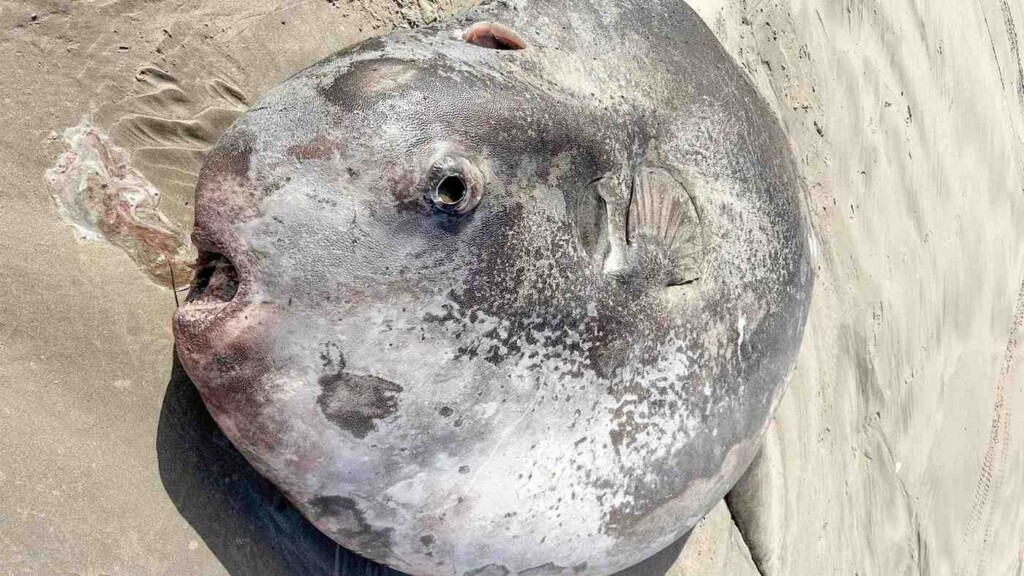
“Through photographs, Marianne confirmed that it was a hoodwinker and that this may be the largest specimen ever sampled. This fish is still on Gearhart Beach and will probably remain for a few more days, maybe weeks as their tough skin makes it hard for scavengers to puncture. It is a remarkable fish and the aquarium encourages people to go see it for themselves,” the aquarium concluded.
SHARE This Incredible Opportunity With Any Coastal Oregonians You Know…
“Never deprive someone of hope; it might be all they have.” – H. Jackson Brown, Jr.
Quote of the Day: “Never deprive someone of hope; it might be all they have.” – H. Jackson Brown, Jr.
Photo by: Ian Britton
With a new inspirational quote every day, atop the perfect photo—collected and archived on our Quote of the Day page—why not bookmark GNN.org for a daily uplift?

Good News in History, June 13
69 years ago today, Alan Hansen, one of the greatest Scottish footballers of all time and one of the greatest defenders to ever play in England, was born. Transforming the role of the central defender with his delicate touch and incisive passing, he won 8 top-flight English titles with Liverpool FC, including a period that saw three in a row between 1981 and 1984, during which they also won the club’s first-ever English League Cup, as well as its first three European Cups. READ more about this legendary player… (1955)
Wild Horses Return to Kazakhstan Plains After Two Centuries of Absence

In an inspiring return 200 years in the making, the last truly wild horse species has been reintroduced onto the open steppes of Kazakhstan.
The Guardian reports that four mares from a breeding program in Berlin and a stallion and two other mares from Prague, were flown to the Central Asian country to mark the second successful reintroduction of Przewalski’s horse to the lands that above all others are associated with this beloved animal.
At an unspecified place on the Eurasian Steppe around 6,000 years ago, of which Kazakhstan is a major component, human beings domesticated the horse. It changed history forever, for no people more so than the ancient residents of Kazakhstan and related topographies.
From that first day until now, all related species interbred themselves more or less out of existence with the exception of Przewalski’s horse, which is why its return is so exciting for the zoo teams in Berlin and Prague involved in the reintroduction.
“For me, the goal of a modern zoo is not just about protecting and breeding endangered species, it is about returning them to the wild where they belong,” said Filip Mašek, Prague Zoo’s spokesperson, while the Zoo’s director, Miroslav Bobak, called the event “the beginning of a whole new chapter in the story of the last wild horse on the planet”.
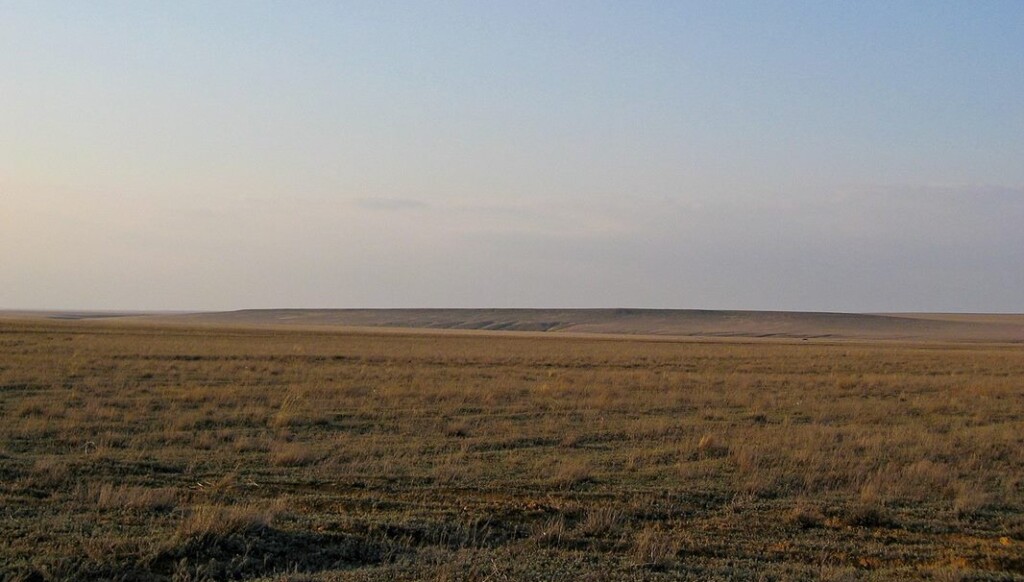
In 2011, Prague Zoo was also involved in a reintroduction of Przewalski’s horses to Mongolia which continued for 8 years until the population stabilized. There are now 1,500 such horses in the country.
MORE SUCCESSFUL REINTRODUCTIONS: Herd of Bison Reintroduced in Europe Are Climate Heroes–Helping Store CO2 Equal to 43,000 Cars
The Kazakhstan reintroduction comes on the back of several environmental success stories driven by a passionate environmental movement in the country. This has included the reintroduction of Bukhara deer around the shores of Lake Balkhash, and the continued legislative and conservation efforts to restore the majestic saiga antelope, which have resulted in a growth of the population to 1.9 million.
SHARE This Inspiring Story With Your Friends Who Love Central Asia…
Exquisitely Preserved 1,000-yo Gaming Pieces Found in German Castle Offer Snapshot of Medieval Pastimes
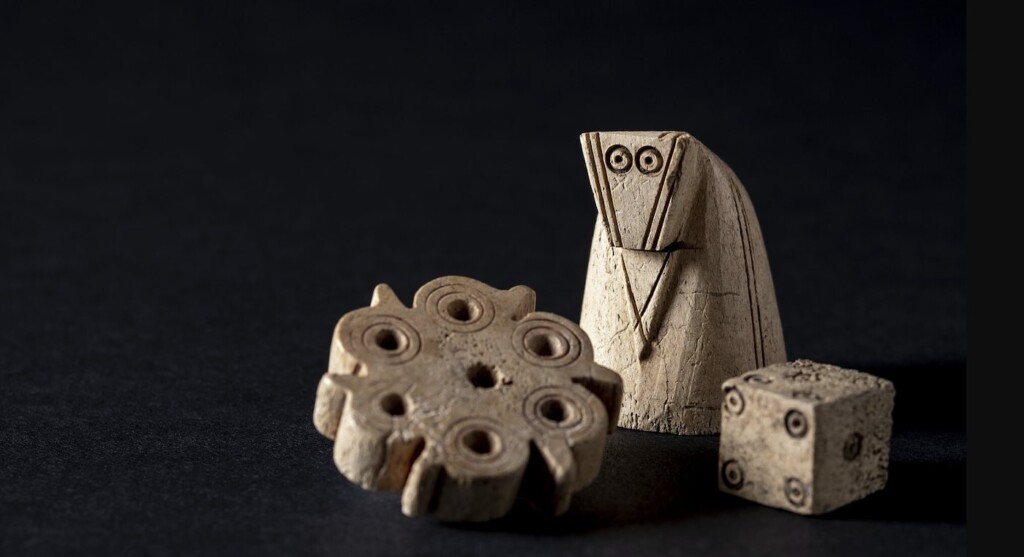
If a history professor or museum is at their very best when they help people deeply connect with the ghosts of the past, then these 1,000-year-old game pieces found in a German castle are the perfect tool for the job.
Consisting of four, flower-shaped gaming pieces, a six-sided die, and a knight chess piece—all carved of antler, the find is a treasure trove of information on pastimes in the Middle Ages.
Exquisitely preserved, the knight piece, undoubtedly the most striking discovery, carries a well-worn sheen on its upper half from fingers picking it up thousands of times to place it along its L-shaped path.
The flower-shaped piece has residues of red paint, suggesting that one side would have played red and the other, presumably, another color.
The pieces were found under a wall segment in the neglected Stahleck Castle in southern Germany’s Baden-Württemberg state, and date to the 11th century.
Experts from the University of Tübingen, the State Office for the Preservation of Monuments Baden-Württemberg (LAD), and the German Archaeological Institute (DAI) collaborated on the excavation.
SIMILAR ARTIFACTS FROM A SIMILAR TIME: Experts Find a 1,000-Year-old Ice Skate Made of Animal Bone in Czech Republic
“In the Middle Ages, chess was one of the seven skills that a good knight should master. It is therefore not surprising that known finds mostly come from castles,” explained Dr. Jonathan Scheschkewitz (LAD).
Arriving during the early Middle Ages in Europe from what was probably Persia, chess became ubiquitous across the continent, and it’s believed the rules haven’t changed much, if at all, since.
TURNING UP THE MIDDLE AGES: 1,000 year old Viking Sword Fished out of an Oxfordshire River with a Magnet
“The discovery of an entire games collection from the 11th/12th century came as a complete surprise to us, and the horse-shaped knight piece is a real highlight,” said Dr. Lukas Werther (DAI).
A Middle Ages exhibition based on the conclusion of the Stahlek excavations and others is set to be held at the Pfullingen Schloss (castle) from June 15th to August 30th, where visitors can see and learn about the game pieces and gaming habits in the Middle Ages.
SHARE This Amazing Discovery With Your Friends Who Love Chess…
Elephants Are the First Non-Human Animals Now Known to Use Names, AI Research Shows
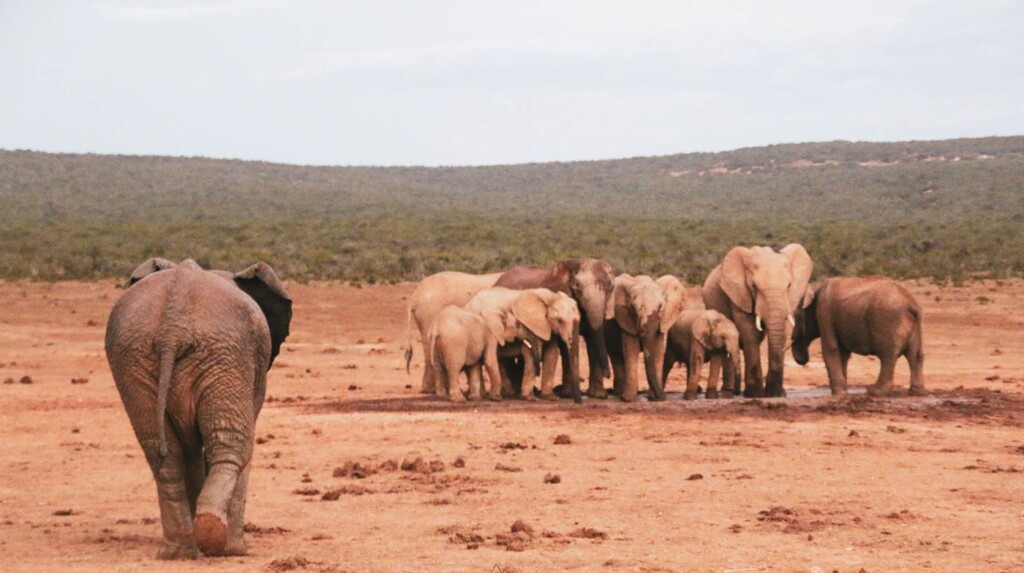
In a study as amazing as it is probably unsurprising, a team of biologists and researchers using machine learning tools discovered that elephants call each other by names.
For an animal that is known to perform deeply social acts like grieving, raising children collectively, and communicating across miles of countryside using complex low-frequency vocalizations, the use of names seems to be natural for their societies, but being able to know an elephant’s name in ‘Elephantese’ offers the potential to dramatically reduce human-elephant conflict.
The study was conducted at Colorado State University and was organized around simple observations that the matriarch of an elephant herd the researchers were following in Kenya would use a call that brought all the elephants together around her.
However, sometimes a perfectly similar call would draw only a single elephant out of the group.
To investigate if this had something to do with a naming custom, the scientists from CSU, Save the Elephants, and ElephantVoices used machine learning to analyze and group vocalizations into those they suspected were meant for multiple members of the herd, and those meant for an individual.
When the researchers played recorded calls, CSU press reports, elephants responded affirmatively to calls that were addressed to them by calling back or approaching the speaker. Calls meant for other elephants received less of a reaction.
In animal vocal ethnology, using a name is considered an “arbitrary communication” says study co-author George Wittemyer, a professor at CSU’s Warner College of Natural Resources and chairman of the scientific board of Save the Elephants, which means a sound that represents an idea but doesn’t imitate it.
“If all we could do was make noises that sounded like what we were talking about, it would vastly limit our ability to communicate,” said Wittemyer.
What arbitrary means in this case is that the sound made when a name is called could be absolutely anything—it’s just something to be assigned to a thing or a person, and is believed to indicate thought abstraction, a sign of higher intelligence.
MORE INTELLIGENCE SCIENCES: New Research Shows Why Crows Are So Intelligent and Even Self-Aware—Just Like Us
In the evolutionary past of both humans and elephants, complex social frameworks demanded precision communication.
“It’s probably a case where we have similar pressures, largely from complex social interactions,” Wittemyer said. “That’s one of the exciting things about this study, it gives us some insight into possible drivers of why we evolved these abilities.”
ALSO CHECK OUT: Octopuses Have Remarkably Similar Sleep Patterns to Humans–and May Even Dream
Kurt Fristrup, a research scientist in CSU’s Walter Scott, Jr. College of Engineering, is also excited about the findings because they present the opportunity to understand what kinds of acoustic features are used in elephant communication as “descriptors” of herd members.
“Our finding that elephants are not simply mimicking the sound associated with the individual they are calling was the most intriguing,” Fristrup said. “The capacity to utilize arbitrary sonic labels for other individuals suggests that other kinds of labels or descriptors may exist in elephant calls.”
MORE STORIES ON ELEPHANTS: Adult Elephants React to Birth in the Herd Just Moments After Adorable Baby is Born (WATCH)
Lastly, Wittemyer believes that developing a rudimentary address book of all the elephants in a given region would allow for unprecedented opportunities to manage human-elephant conflicts, as the individual animals in the study consistently responded with great acuity to the sounds of their names.
“It’s tough to live with elephants, when you’re trying to share a landscape and they’re eating crops,” Wittemyer said. “I’d like to be able to warn them, ‘Do not come here. You’re going to be killed if you come here.’”
In April, scientists were confident they had a conversation with a humpback whale, suggesting humanity may be on the cusp of entering an age of conversational capacity with animals who share our world.
WATCH a video explainer below…
SHARE This Outstanding Observational Science Of These Genious Giants…
Drive-Thru Food Pantry Serves Thousands in a California Food Desert with Nutritious Groceries
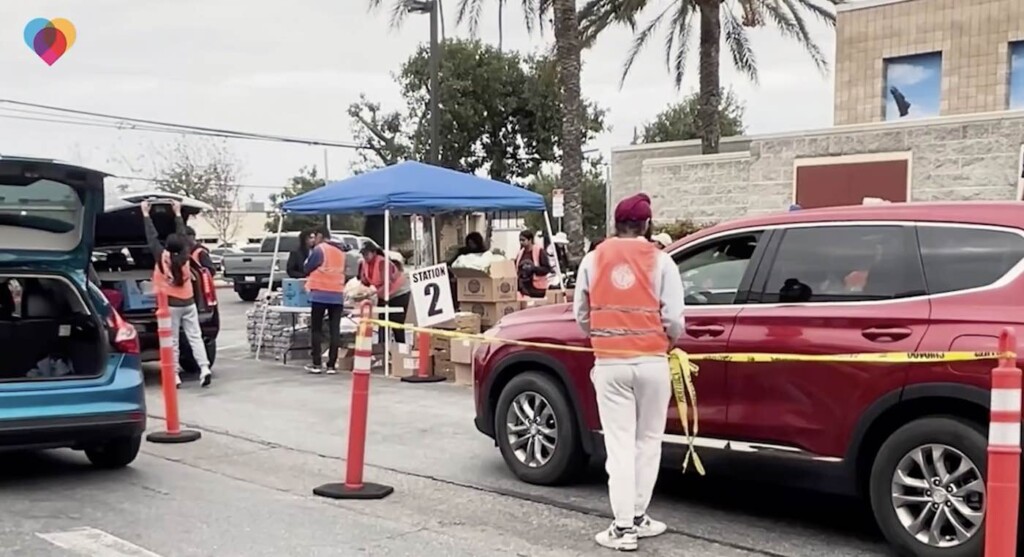
In India, those of all faiths occasionally visit the places of worship of the Sikhs to get a delicious taste of ‘Seva,’ the Sikh principle of selfless service when they give out free dinners to anyone who visits.
In California, Sikh organizers are capturing that culture and using it to help residents of Santa Ana—a large food desert where residents struggle to have routine access to nutritious food.
At one of the longest drive-thrus you’ll ever see, volunteers, some with turbans and some without, load up the trunks of cars with 2-weeks worth of produce and groceries—no questions asked.
The organizers, called the Seva Collective, have already handed out 4 million such parcels, but they’re continuing to grow all the time—partnering with farms, businesses, and food banks to distribute as much as possible to those who need it.
“Our goal is to get fresh food, as well as shelf-stable food to every family’s car or cart who comes through the drive,” Bandana Singh, who co-founded Seva Collective alongside Ravin Kohli and Saanand Singh.
“We have cars lined up as early as three or four in the morning—we don’t start the drive till 9:30 a.m. So to us as the volunteer team, it tells us that the need is there and we want to do whatever we can.”
Residents say it’s nutritious, it’s uplifting, it takes away the “dread” and sense of anxiety about having enough real food to feed their families.
But how exactly could anyone live in a ‘food desert’ without Seva’s service?
Food deserts are typified by a wealth of fast-food restaurants and convenience stores that sell ultra-processed foods rich in sugar, salt, and vegetable oils, and a dearth of grocery stores and farmer’s markets.
ALSO CHECK OUT: Sikhs Around the World Are Sending Thousands of Donated Meals to Elderly and People in Self-Isolation
As a result, Seva puts an emphasis on supplying unprocessed and nutritious food whenever possible—which often means they’re covering fast distances to acquire it.
“When we first started, we were driving to LA downtown food market, we were driving to Central California to pick up citrus—we were kind of all over the place,” said Bandana Singh told CBS News.
GENEROSITY WITH A TURBAN: Sikh Gas Station Owner Sells Gas 50 Cents a Gallon Cheaper than What it Costs to Help Customers
Each month, the Seva Collective distributes 60,000 pounds of food to more than 1,200 families and they’re beginning to expand operations to offer books, toys, and clothing as well.
Volunteers come from all backgrounds, but it’s rooted in the teachings of Sikhism: That life is precious, that god has a plan, and that unless you work hard, you won’t come to know what your role in that plan is. Ms. Singh and the squadron of volunteers work hard indeed, and they impart a little bit of this Sikh wisdom into their operations—like on Vaisakhi, the celebration of the formalization of the Sikh religious brotherhood and sisterhood.
WATCH the story below from CBS… For Viewers Outside US, Watch HERE.
SHARE This Inspiring, Intercultural Charity With Your Friends…
“You cannot shake hands with a clenched fist.” – Indira Gandhi
Quote of the Day: “You cannot shake hands with a clenched fist.” – Indira Gandhi
Photo by: engin akyurt
With a new inspirational quote every day, atop the perfect photo—collected and archived on our Quote of the Day page—why not bookmark GNN.org for a daily uplift?

Good News in History, June 12
Happy 50th Birthday to Hideki Matsui, aka “Godzilla”. The DH and outfielder was one of the best Japanese visitors to these shores who ever played in the Major Leagues. He enjoyed a 7-year career with the New York Yankees, during which he won the World Series in 2009 and was named the MVP. Playing his first 10 years with the Yomiuri Giants in Nippon Professional Baseball, Americans were treated to this outstanding player for a tragically short period of time. READ some excellent stats on Matsui-San… (1974)
First Human to Spend 1,000 Days in Outer Space Offers Unprecedented Opportunity to Study ‘Rocket’ Man Effects

Oleg Kononenko has become the first human to accumulate 1,000 hours of spaceflight over a 16-year career visiting and living aboard the ISS.
The milestone comes on his fifth flight to space and during his third stint as the commander of the ISS. In February he passed the previous record of 878 days, held by fellow Ruscosmos pioneer, Gennady Paldaka.
Arriving aboard the Soyuz MS-24 spacecraft last September alongside cosmonaut Nikolai Chub and NASA astronaut Loral O’Hara, he won’t touch down again for another 4 months, at which point he will become one of the most valuable human biology specimens in the world.
Given that both the Artemis Accords and the Chinese/Rest of World alternative—the International Lunar Research Station initiative—aim to send men and women on longer and longer voyages to space, including semi-permanent habitation of the moon and eventually a journey to Mars, astrophysiology needs to understand what long-term exposure to the rigors of outer space will do to the human body.
To that end, Kononenko, who has routinely spent many hundreds of consecutive days, and even years in low-Earth orbit, will be providing data points “days, months and years,” after his return, says Emmanuel Urquieta, the former chief medical officer of the NASA-funded Translational Research Institute for Space Health (TRISH), led by Baylor College of Medicine.
Speaking with Space Flight Now’s Will Robinson-Smith, Urquieta explains that medicine in space is an emerging field and that how the environment of space affects eye health, bone loss, and blood flow, isn’t well known, nor are the effects of prolonged radiation exposure and prolonged space motion sickness.
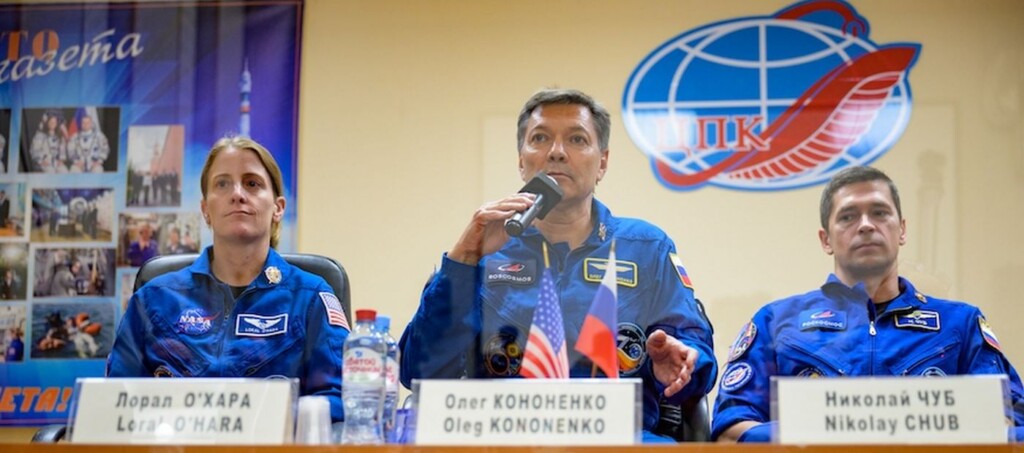
“I’m sure that there will be a lot of research coming up in the future when he comes back to Earth and I’m sure that there will be a very long follow-up with him, you know, days, months, and years after, to try really to understand these very unique data points,” Urquieta said.
OTHER GREAT SPACE STORIES: Astronaut Training Pays Off at 90: Ed Dwight Finally Reaches Space, Making History as Oldest to Ever Do it
“When you extrapolate the data that we have from six-month missions to 900 days, there’s still a huge gap of data that we need to fulfill; that we need to get so that we can safely say that, ‘ok, we have enough data that we can confidently say that we’re able to send someone to Mars and make sure that that person is going to come back as healthy as he or she left Earth.’”
Though born in the Soviet Union and is thus Russian today, Kononenko is from Turkmenistan, and is deeply proud and connected to his homeland.
MORE ASTRONAUT STORIES: Priceless Video Shows US-Russian Group Hug in Microgravity When Astronauts Arrive at the ISS
Across his long career, Kononenko has completed over 18 hours of spacewalks, during which he performed experiments, repairs, and fortifications on the exterior of the ISS Zvezda Service Module.
In December of 2015 he completed a rare night-time re-entry, and owing to distinguished collaboration with his colleagues across the Atlantic, he has received both the NASA Distinguished Public Service Medal and the NASA Space Flight Medal.
CELEBRATE This Man’s Incredible Achievement And Counting With Your Friends…
Washington State Bans Single-Use Foam That Breaks up and Pollutes Waterways for Orcas and Salmon

Passed back in 2021, a law in Washington state that bans single-use polystyrene food and drink containers has come into effect.
Made from tiny hollow beads of different plastics that are extremely friable, polystyrene is arguably the most damaging form of plastic in the environment.
Still permitted to be used in packaging and other applications because of its lightweight, durable, and insulative properties, some estimates suggest polystyrene takes over 1,000 years to completely break down, all the while shedding microplastics into the soil and water.
At least 11 states have passed laws to phase out expanded polystyrene foam, according to Oceana. The environmental group is among those calling for nationwide prohibitions on the material. Seattle banned foam food containers about 15 years ago. Oregon Governor Tina Kotek signed a law last year that mirrors Washington’s policy.
Recycling polystyrene is possible, but Washington’s Department of Ecology notes that it is expensive to do and that most residential recycling programs don’t accept the foam. Food residue on the material complicates things further, which is one reason why the ban affects takeaway containers, but doesn’t address other uses.
ALTERNATIVES TO FOAM: Indian Startup Uses Rice Crop Waste to Make Biodegradable Foam Packaging–Instead of Burning it
OTHER DECISIVE ACTION: In Major Victory for the Environment, Germany Bans Single-Use Plastic and Styrofoam
When the foam does end up in recycling facilities it can blow around and contaminate other materials, something that’s also liable to happen in the course of getting it to the facility in the first place.
Violators will be fined but also have access to support and resources that should hopefully help them find ways to replace the foam containers with less harmful ones. This might be replacing foam containers with those of aluminum—which along with being reusable, also insulates food longer.
SHARE This Good News For The Oceans With Your Friends…
Three Boys Discover 30% of a Complete ‘Teen-rex’ Skeleton While Hiking
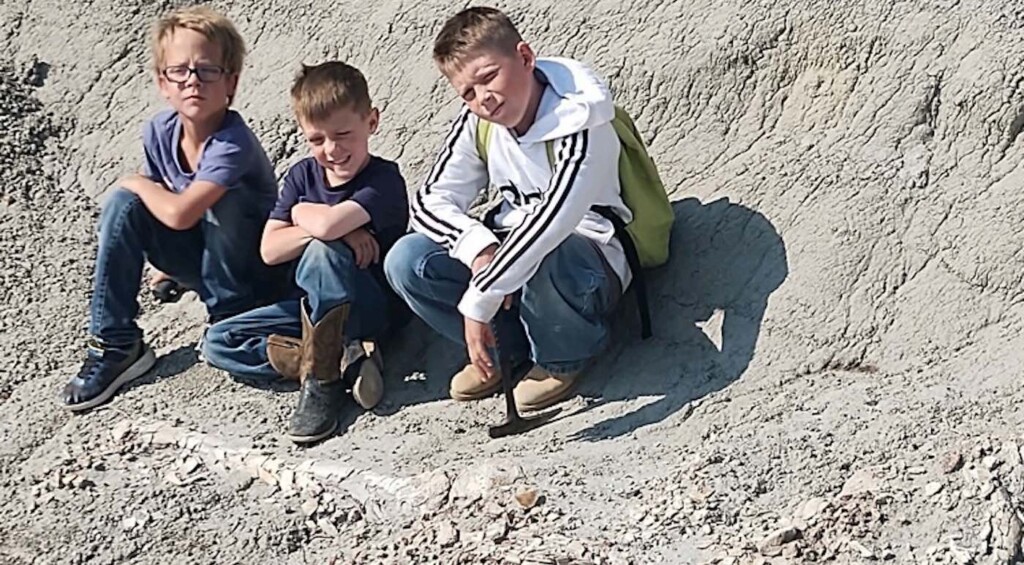
What started as a family hike in North Dakota by two young brothers Jessin and Liam Fisher quickly turned into a once-in-a-lifetime discovery that career paleontologists would kill for.
Along with their dad, Sam Fisher, and their cousin Kaiden, they identified the remains of a juvenile T. rex skeleton of about 30% completeness, including almost the entire right leg structure, a few vertebrae, the lower jaw, and the all-important hips and pelvis.
It was back in July of 2022 that the teen trio discovered their Cretaceous counterpart in the Badlands. Dad Fisher actually knew the phone number of the Denver Museum of Nature and Science paleontology curator—Dr. Tyler Lyson, whom he went to high school with.
“I didn’t know it was a T. rex, because all I had were photos, and the knee joint looked like a duckbill,” Dr. Lyson told CNN. “Later, I started looking at the photos a little more closely. And the way in which the bone was breaking up into sheets indicated it might be a meat-eating dinosaur.”
He proposed the idea to some of his paleontology friends, who concurred that it was probably a duckbill, at which point Lyson relegated the idea of a carnivore to “wishful thinking.”
It wasn’t until the following summer that Jessin, Liam, and Kaiden were able to take part in retrieving their discovery from the Earth as permission for excavation had to be obtained from the land managers.
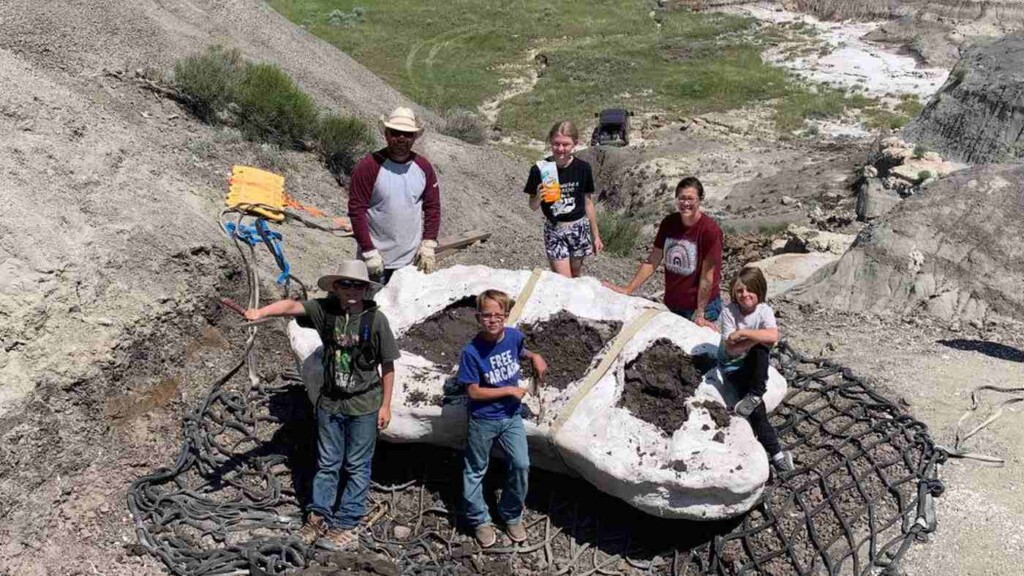
It was on the first day of excavations, with the kids front and center, that Lyson and his team found the lower jaw full of teeth—shattering the duckbill hypothesis and sending the whole team onto cloud 9.
“The kids were with us every step of the way, which was great,” Lyson added “We realized it was a T. rex on the first day. We had cameras rolling while it was happening.”
The paleontologists who took part in the excavation believe the ‘Teen Rex’ weighed 3,500 pounds, stood 10 feet tall, and was 25 feet long at the time of its death, according to a Denver Museum Q&A page.
YOU’VE GOT TO SEE THIS: Portuguese Man Accidentally Finds 82-Foot-Long Dinosaur in His Backyard
A fully-grown adult T. rex could weigh over 9,000 pounds and stretch over 40 feet from nose to tail.
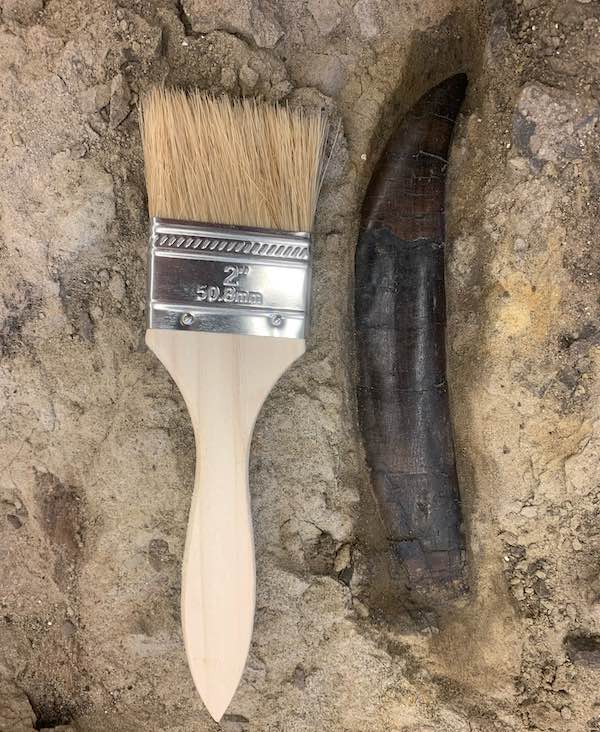
“I’m excited for Museum guests to dig into the ‘Teen Rex Discovery’ experience, which I think will inspire the imagination and wonder, not only in our community, but around the world!” said Dr. Lyson in a statement from the museum announcing a new film and exhibit based around the teens’ discovery.
DINOSAUR NEWS IN NORTH AMERICA: How One Man Stumbled Upon Complete Stegosaurus Skeleton Now Set to Earn Millions at Auction
Captured on film in the new 40-minute documentary T. REX, they will be featured alongside their dino on the museum’s Infinity Theater on June 21. With state-of-the-art CGI and cutting-edge paleontological insights, this giant-screen movie offers an unprecedented journey into the world of T. rex and its fellow Cretaceous carnivores.
SHARE These Teens’ Cloud-9 Day In The Badlands Digging Up This Fossil…
Dog Runs Four Miles to Get Help for Owner Who Crashed Car into Oregon Ravine
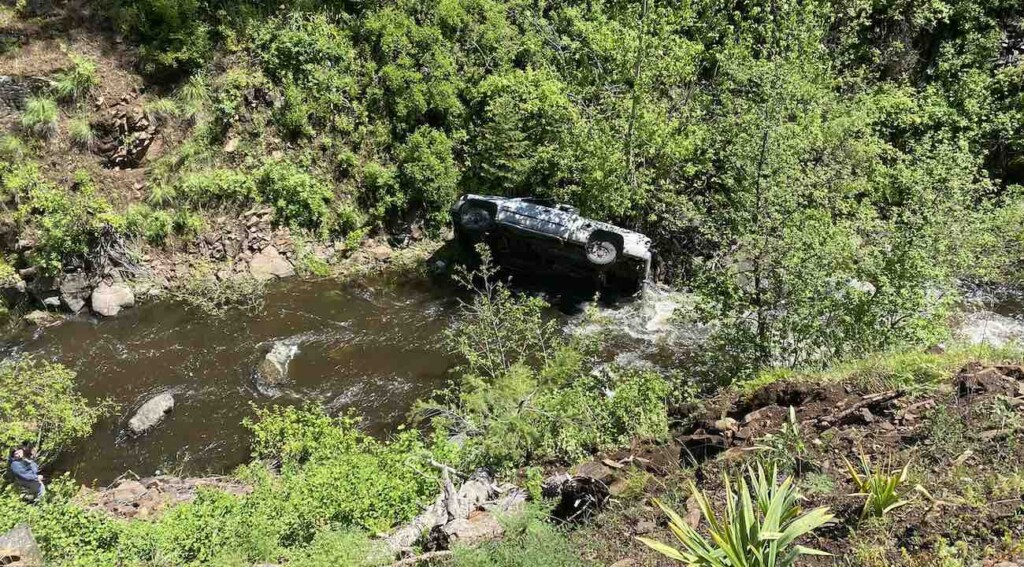
The owner of this pickup has one of his dogs to thank for his life, after a loss of control in the mountains of Oregon saw him turn over into a ravine.
Injured, but alive after his crash on US Forest Service Road 39, one of Brandon Garrett’s four dogs ran to get help.
According to a statement from the Baker County Sheriff’s Office, the dog managed to negotiate 4 miles of wilderness and trails to make its way back to a campsite where some of Garrett’s family had been staying.
He hadn’t returned to camp that night, so they were already worried and on edge, and the appearance of the dog confirmed their fears.
Meanwhile, Garrett was able to crawl approximately one hundred yards from the vehicle, where he spent the night on dry ground. The rest of the party continued to search for him, and family members located his vehicle on the morning of June 3rd, calling emergency services at this time.
DOG RESCUING MAN: Dog Named Hero Saves Owner’s Life for Days, Fighting Off Cold and Coyotes and Getting Help
Members of the Baker County Search and Rescue Ropes Team set up their rescue equipment and began the difficult task of reaching Garrett. With help from the Forest Services’ chainsaws which cleared their path to him, they loaded and secured him in a rescue basket.
He was connected to a highline rope system and pulled across the ravine, where he was transferred to medical personnel who in turn transported him to the Life Flight helicopter for airlift to a regional hospital. His three other dogs were all unharmed.
MAN RESCUING DOG: Helicopter Herder Follows a Dog’s Tracks from the Air to a Miracle Rescue
With all their experience performing rescues in searches in the mountains, the rescue service members said that without Garrett’s dog, there was a very good chance he would not have been found.
It’s a harrowing reminder that not all heroes wear capes, or clothes at all—some have fur and bark.
SHARE This Man’s Life Saved Thanks To His Outstanding Dog…
“Time and memory are true artists; they remold reality nearer to the heart’s desire.” – John Dewey
Quote of the Day: “Time and memory are true artists; they remold reality nearer to the heart’s desire.” – John Dewey
Photo by: Sathish J – CC license
With a new inspirational quote every day, atop the perfect photo—collected and archived on our Quote of the Day page—why not bookmark GNN.org for a daily uplift?

Good News in History, June 11
105 years ago today, Sir Barton became the first racehorse in history to win the Triple Crown. A chestnut colt bred in 1916 on a farm near Lexington, Kentucky. Sir Barton was sired by the British stallion Star Shoot out of the mare Lady Sterling, by Hanover. Sir Barton’s paternal grandsire was the 1893 English Triple Crown winner Isinglass. Known to be a grouchy horse, he won the Withers Stakes in 1919 in addition to the Triple Crown. READ more… (1919)
After Studying Mammograms, AI Can Detect More Breast Cancers Than Humans–With Fewer False Positives

Using AI, breast radiologists in Denmark have improved breast cancer screening performance and reduced the rate of false-positive findings.
The discovery comes 16 months after a study from the same hospital found that AI could diagnosis cancer in chest X-rays at least as good as a board-certified radiologist, but noted that many radiology departments are understaffed.
When used to triage likely normal screening results or assist with decision support, AI also can substantially reduce radiologist workload.
“Population-based screening with mammography reduces breast cancer mortality, but it places a substantial workload on radiologists who must read a large number of mammograms, the majority of which don’t warrant a recall of the patient,” said Dr. Andreas Lauritzen researcher at the Gentofte Hospital in Denmark and lead author of the study
“The reading workload is further compounded when screening programs employ double reading to improve cancer detection and decrease false-positive recalls.”
Compared to screening without AI, screening with the AI system detected significantly more breast cancers (0.82% versus 0.70%) and had a lower false-positive rate (1.63% versus 2.39%).
“In the AI-screened group, the recall rate,” referring to the number of times a patient was asked to return for a follow-up examiniation, “decreased by 20.5%, the radiologists’ reading workload was lowered by 33.4%,” Dr. Lauritzen said.
A BRIGHTER AI: Look What AI Could Do for Architecture: Giving Rise to a Stunning New Style
The positive predictive value of AI screening was also greater than that of screening without AI (33.5% versus 22.5%). In the AI group, a higher proportion of invasive cancers detected were 1 centimeter or less in size (44.93% vs. 36.60%).
“All screening performance indicators improved except for the node-negative rate which showed no evidence of change,” Dr. Lauritzen said.
MORE ARTIFICIAL INTELLIGENCE STORIES: Drones Find Dozens of Landmines Littering Ukraine So They Can Be Defused
An improvement of 20% was also seen in the accurate diagnoses of breast cancers in a Swedish study done at Lund University, whereby the labor saving capacity of the device was even higher than in Dr. Lauritzen’s study.
An editorial accompaniment was also pushed alongside this study which praised the abilities of the AI to reduce human workload, and suggested that rather than presenting the possibility that AI can do a radiologists job, the evidence suggested that such AI programs should be developed as labor-saving devices.
SHARE These Rapid Advances In Diagnostic Sciences With Your Friends..




















